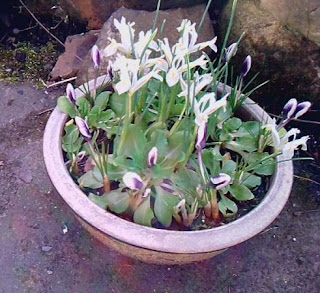Winter is over and summer is come
and the sound of the lawn-mower is heard in the land.
I caught a glimpse of a blackbird hen trying to get about three feet of grass stem into the hedge this week. I am fairly certain there is a dunnock nesting there, as well as a colony of sparrows, and a robin is using the birch and the rowan as song-posts, so the nesting season is under way.
Plants in the woodland garden are bulking up nicely, and the first honesty is in bloom. Flowers are a big deal just now, as the bumblebees have been emerging from hibernation. The crucuses were all early, but the daffodils are late, or coming up blind, so I will have to think of some more early flowers to increase the pollen supplies.
The garden has been quite noisy, as, along with the birds and the bees, the frogs have been at it too. There’s quite a lot of frogspawn this year, so I hope there will be no sharp frosts.
The last two days have been grey, fairly cool, and misty. As we came home from our daughter last night the mist was condensing on the tree branches and dripping like rain. Shrubs like honeysuckle, tutsan and fruit bushes are in their first leaf, and the early trees are just at bud burst.

















